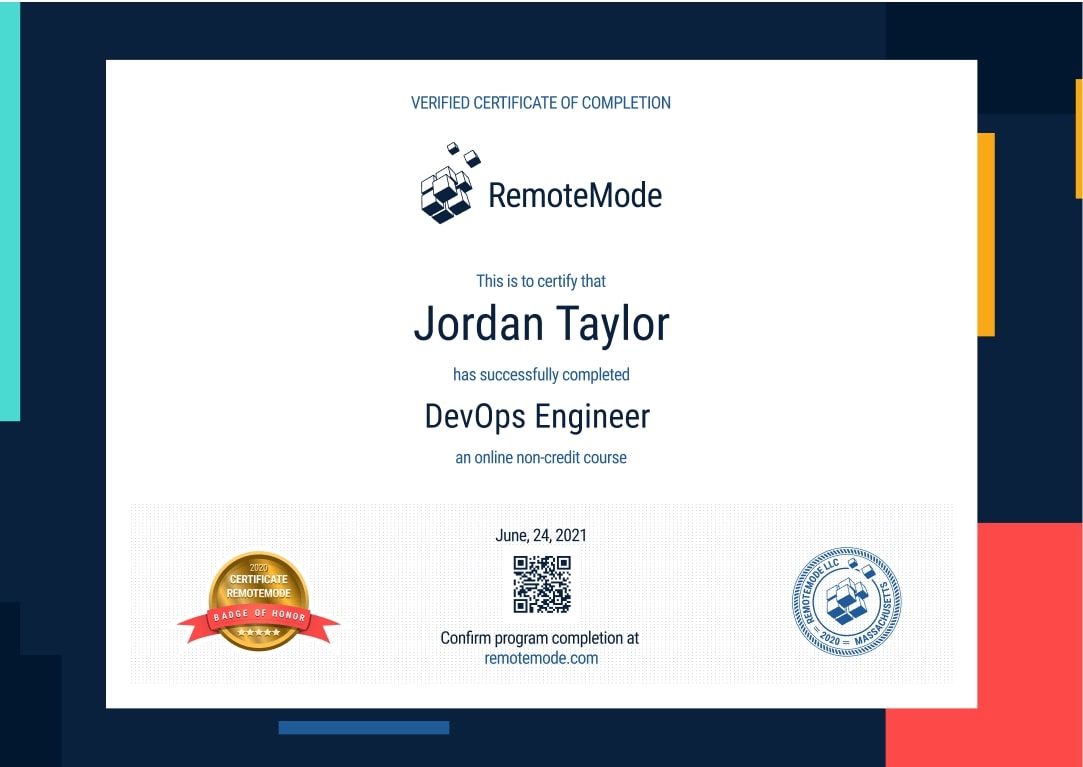Become an Azure Cloud Engineer
Build and manage systems for one of the largest cloud infrastructures built. Use Microsoft Azure’s platform, tools, and services to manage applications for some of the biggest companies in the world. Get familiar with cloud computing and how to effectively operate it.
- 6-month long course
- 229 lessons
- 6 hours per week
- 148 hours



Mission Forecast for Microsoft Azure Cloud Engineers
Landing Zone
Microsoft Azure is the biggest public Cloud computing platform ever created. Applications continually are adapted for the cloud and the choice for these developers is typically binary. Since Azure has a larger market share, that calls for a greater need for Azure engineers. Cloud-based applications and implementations are growing rapidly, and the need for good engineers is projected to increase by 29% in the next 4 years, and another 11% in the next 9.
Mission Objective (Who’s Hiring Right Now)
Azure Cloud Engineer Overview
As an Azure cloud engineer, you will not only be on the cutting-edge of technology, you will also be securing a position as a developer for the largest cloud computing platform created. Cloud computing is understood, but still considered a new technology. Start learning today and secure your position as a leader in the industry.
- + 6-month long course
- + 6 hours per week, go at your own pace
- + 229 on-demand lessons
- + 148 hours of material
- + Receive a certificate confirming your training
- + Participate in real-life Virtual Lab projects
- Design networks that connect to Azure systems.
- Understand how the architecture works and how to modify it.
- Monitor and manage cloud infrastructure.
- Ensure the security of your company’s data.
- Troubleshoot and be able to explain solutions.
- Improve architecture as needed.
Prepare for Liftoff
CompTIA NET+ Cert
Looking at Robert Half’s 2020 IT salary report, network engineers and network administrators are among the top 10 in-demand jobs of 2020. These jobs, whose demand is rapidly increasing, are best for individuals who will be able to secure a Network+ certification.
About the Course
This course provides expertise in computer networking concepts at both theoretical and practical levels. Composed of 17 chapters, this course will sufficiently prepare course takers to secure a Network+ certification.
Who is this Course For?
CompTIA Network+ is a certification that may help individuals seeking career advancement in IT infrastructure by teaching them to diagnose, configure, and manage networks.
Course Prerequisites
There are no prerequisites for CompTIA Network+ since it is a vendor-neutral certification. Interested course takers may register for the certification even without a degree or previous expertise in computer networking.
CompTIA, on the other hand, suggests that course takers have the CompTIA A+ certification or similar expertise, as well as at least 9 months of experience in IT or a networking infrastructure setting. Having this background will make it much simpler for them to grasp the ideas.
CompTIA NET+ Cert Overview
This course consists of 17 chapters. The following highlights in detail the topics and content under each chapter.
Part 1: Theory and Communications – this session revolves around the fundamentals of networking. Important terminologies will be defined before discussing network models such as peer-to-peer and client/server and the functionality provided by them as well as the typical networks they are usually found. More importantly, learners will be briefed about the topology of the network, both in the physical and logical sense. The session concludes by looking into the actual signals and data transmission methods that are used on the network.
Part 2: Media and Hardware – this session covers a lot of ground on cables, including touching the history of coaxial cables used in earlier implementations of Ethernet. The discussion spans various types of optical cables that exist, single mode and multi-mode fiber of various types and distances. The session ends with an overview of the network devices that are required to connect nodes on the network.
Part 3: Implementations and Models – this session focuses on the implementations of two major kinds of networks. It also takes on ISO standard OSI / RM. It also presents the most popular protocol model known as TCP/IP, as well as its function and relation to the OSI Model.
Part 4: TCP/IP Addressing and Data – the TCP/IP protocol and its six basic protocols that make up the suite, each with a distinctive duty or function to serve, the principles of IP addressing, and the setup and usage of both standard and bespoke IP address schemes are all topics covered in this part. This session also discusses the next version of the TCP/IP protocol and the capabilities it offers, as well as numerous delivery mechanisms used by designers and engineers to account for variances in network nodes trying to connect with one another.
Part 5: TCP/IP Services – This portion highlights assigning IP addresses and various TCP/IP protocols, naming resolution services, and identifying utilities that are used for both configuration and diagnosis.
Part 6: LAN and WAN Infrastructure – this section covers various network devices that network technicians work with. Learners will get to analyze the various types of switches as well as their cost and capabilities. This session also discusses WAN transmission and connectivity options that exist for today’s networks, including various styles of networks such as circuit switching networks used by DSL, ISDN, and T-Carriers, cell-switching networks used by ATM, and packet-switching networks used by Frame Relay and MPLS. Lastly, this session ends with explaining the common concept of converged networks where technicians can maintain different types of traffic, such as voice, video, and data on the same underlying infrastructure.
Part 7: Remote Networking – this session introduces learners to the two basic types of remote networking: remote node and remote control. Learners also learn the various aspects of a VPN connection, its authentication mechanisms, and familiarity with the most common method of connecting machines remotely to the corporate network.
Part 8: System Security – this session highlights a number of security fundamentals, principles, devices, and configurations. Learners will also identify key procedures such as authentication and authorization, discuss and implement encryption technologies, and utilize security tools.
Part 9: Network Security – this segment focuses on network defenses that are implemented at various levels in the organization. Learners will get to know these network devices as well as implement network security controls to protect users and the data within the corporate network.
Part 10: Security Threats and Attacks – this section gives an overview of the massive number of threats and vulnerabilities that contemporary networks face. Certain security concepts such as threats, vulnerabilities, risks, and how to deal with them will be discussed. Also, learners will learn about various attacks and how they work. More importantly, learners will get to learn how they can implement defense mechanisms to minimize risk for an organization.
Part 11: Network Management –this chapter revolves around certain areas that require adequate planning in order to implement and maintain successful network infrastructures.
Part 12: Network Troubleshooting –this chapter reveals certain ways a network technician can do when things go wrong. This session starts with laying down troubleshooting methodology, as well as various tools technicians can use to troubleshoot issues. Lastly, this course also tackles some common problems, their causes, and their resolutions.
Part 13: Network Architecture – This course examines the important changes between the previous edition of the test (N10-005) as well as revised and extended material for Domain 1.0 of the CompTIA NET+ Certification Exam N10-006. This course covers unified communications, cloud and virtual computing technologies, as well as installing and configuring network services and applications, network infrastructure installations, IPv6, and routing fundamentals.
Part 14: Network Operations — Examining network monitoring tools provided with Windows and network devices to detect the influence they have on network efficiency and performance, this course focuses on Domain 2.0 of the CompTIA NET+ Certification Exam N10-006. Configuration management, network segmentation, and evaluating metrics and reports, as well as how to install and apply patches and upgrades, will all be covered. Finally, this course explains how to set up layer 2 switches and wireless LAN infrastructures.
Part 15: Network Security — This course focuses on Domain 3.0 of the CompTIA NET+ Certification Exam N10-006, a significantly extended and revised goal. Risk assessment, business continuity, disaster recovery, and high availability will all be investigated, as well as risk mitigation via network hardening on operating systems and devices. In addition, the principles of network forensics will be explained in order to identify a hacked machine.
Part 16: Troubleshooting – This course introduces troubleshooting, starting with implementation techniques and organized techniques, with an emphasis on Domain 4.0 of the CompTIA NET+ Certification Exam N10-006. This will entail learning the symptoms and remedies for a variety of issues, such as those involving wireless, copper, and fiber connections, device setup, routers, switches, network security, and wide-area networking (WAN).
Part 17: Industry Standards and Theory – This course covers collision and broadcast domains, communication types, network number systems, and wired connections, all of which are covered in Domain 5.0 of the CompTIA NET+ Certification Exam N10-006. Following that, a review of network security rules and processes, as well as documents such as Service Legal Agreements, will be presented. Finally, network security, procedures and equipment security, and change management will be investigated.

Mission Control
- Stay focused with a mentor’s help and support
- Build a real portfolio with Virtual Lab Projects
- Compete with classmates in a virtual classroom
- Measure your progress with the Activity Tracking Log
- Make sure you get the job with resume help and interview assistance
In Collaboration with
Chart Your Trajectory (229 videos 71 hours)
Certificate of Completion
- Receive a certificate recognized by prevalent companies confirming your training
- Complete real projects in Virtual Labs
- Go at your own pace, learn your way
- Access course videos and materials 24 hours a day
- Take practical quizzes to keep you up to speed
- Classes created and mentored by industry leaders

Grow into an Azure Cloud Engineer
As Microsoft Azure grows, engineers will be pushing the platform to new levels. Become one of the engineers on the cutting edges of technology work with some of the most advanced tools the industry has to offer.
Program Forecast
- 6 months long, 6 hours per week
- 229 lessons in 148 hours
- Learn at your own pace
Virtual Lab
- Real Projects
- Create a working portfolio
- Receive expert feedback and mentoring
Career Services
- Interview preparation
- Resumé assistance
- Help with LinkedIn networking
Request More Information
View pricing and financing options